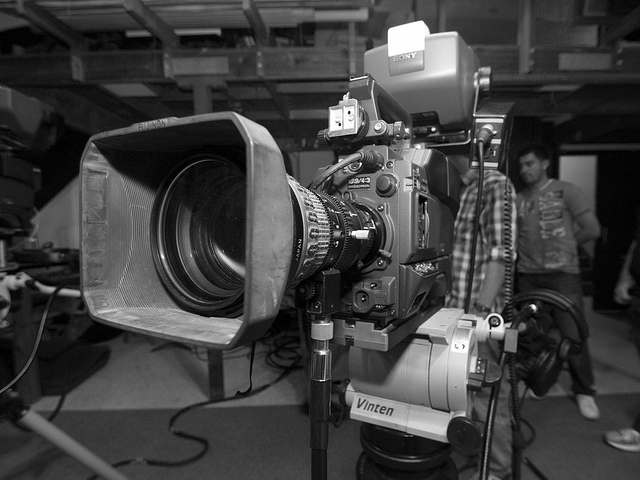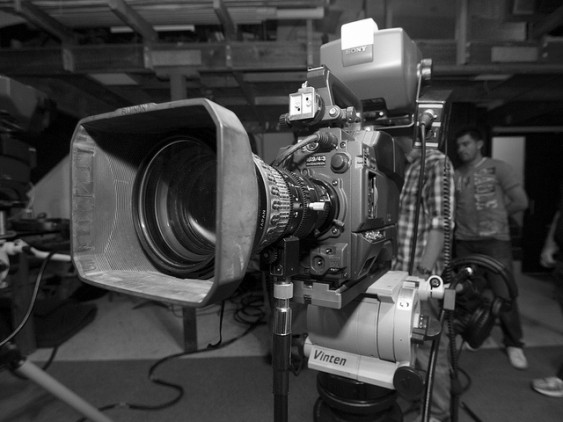Little good can come from weather catastrophes. But, at the very least, out of the destruction and heartbreak will rise a frank discussion about climate change.
That’s why my First Rule of Talking Climate and Extreme Weather is simply: Talk about it!
But, how do you talk about it when the science is complicated and the politics are so charged?
Here’s the first step. And please do not skip this step! The point here is that the order in which you say things matters—a lot.
Rule #2: Start With the Basics
When weird weather strikes, what people want to know is what we’re quite sure of. And when I say “basic,” I mean it. Is climate change happening? Is it caused by humans? Does it play a role in our weather?
The answers here are simple and clear: yes, yes, and yes.
Whatever their level of knowledge about the science, people need to hear those basics, consistently and persistently. So, start with what is well known about climate change.
Here are the elements to cover before you say anything else:
- Human activities—especially burning coal, oil, and gasoline—are loading our atmosphere with heat-trapping gases.
- The result is a warming climate and we are already seeing impacts.
- Extreme weather is driven by many factors—and human-caused climate change is now one of those factors.
- Climate change is making some types of extreme weather more frequent and more intense.
In other words, start with the fundamental, well-established facts about climate change and then move to the relationship between climate change and extreme weather, keeping it simple and straightforward.
Now, some of this Climate 101 stuff might strike you as too simplistic. And we know that for many non-expert audiences, piling on more and more scientific evidence fails to change minds or spark action—and getting mired in the “debate” frame gets us nowhere fast. Remember, your aim is not to convince deniers. But, with all the confusion, delusion, and misinformation out there, people actually do need to hear it—even those who understand the science. And most of us need the basics to be stated in plain terms. And it needs to come first.
Put the “blame” question on ice
If you talk to the press about the connection between climate and weather, it’s likely that you’ll get some version of the “blame” question: Did climate change cause a particular recent weather event? It’s a natural question to ask, but the question itself is misleading—no event can be blamed on a single factor.
As Christine Shearer, Center for Nanotechnology in Society, University of California Santa Barbara, and Richard B. Rood, Department of Atmospheric Oceanic and Space Sciences, University of Michigan, put it, “Even well-crafted, nuanced responses to this question by scientists…can appear in the public realm as uncertainty and equivocation. This perceived equivocation, in turn, can fuel public misunderstandings and political arguments.”
So, save your answer to the blame question for later. But first, go back to the rule: START WITH THE BASICS.
As I said before, when the weather is extreme, what people want to know is what scientists are quite sure of. Take the “blame” question as an opportunity to pivot to important questions that can be answered clearly and in plain terms: Is climate change happening? Is it caused by humans? Does it play a role in our weather? Then you can go into specifics about the particular event or type of extreme.
Save the standard disclaimers for last
Among experts, it’s something of a professional norm to begin discussing one’s work with disclaimers: unknowns, uncertainties, and gaps in the research. This makes sense among colleagues who, like you, know the science inside and out.
But that’s the exact wrong order for talking with non-experts.
I’ve said it before and I can’t say it enough: When you begin with caveats and disclaimers instead of stating the basics, the only thing people are likely to absorb and remember is the uncertainty. That becomes your soundbite. So, unless you start with the well-established basic science, everything else you say afterward will likely be rendered pretty much worthless for lay audiences who only have the soundbites to go on.
The folks at Climate Nexus make a similar recommendation about where to begin your communications in their excellent guide, Connecting the Dots. Here’s how they put it:
Don’t Start Weak. Conversations in the media are extremely short and often framed by the first thing we say. Starting off by saying we cannot blame individual events on climate change is confusing at best and misleading at worst. Instead, start with what we do know, and build from there.
In other words, starting with the basics helps you break some habits that risk keeping important information from important audiences. This rule could also be called “Start Strong” or “Get the Soundbite Right.”
Of course there are still lots of questions about climate change and weather. And you can talk in more depth about what we do and don’t know when it comes to a particular event or trend. But don’t start there. Always, always, always start with the basics.
Why follow this rule?
It seems obvious to say climate and weather are linked; climate is the average of many weather events over time, the pattern of our day to day weather measured over years. But in my circles, everybody talks about the weather but nobody wants to talk about climate change (besides my wonky co-workers, of course).
So, weather seems to be a natural way to start a real conversation about climate. Plus, as I’ve written before, weather helps us take the otherwise big and abstract problem of climate change—that’s consistently been belittled as a polar bear’s problem or something for those sorry, faceless “future generations” to deal with—and brings it to the here and now.
This is not simply about scientific literacy. Remember: We’re not really trying to reach deniers here, we’re trying to reach those who are in the know but aren’t yet inclined to get too worked up.
It’s a conversation worth having—and worth doing right. Seeing may be believing, but only experts can help us interpret what we’re seeing—whether it’s in our backyard or unfolding on our television screens.
That’s where you come in.
Start with the basics. In other words, avoid talking about climate and weather without establishing what is known at the most fundamental level. Boil it down into language that everybody can get. Say it before you say anything else. Repeat often.
That’s rule 2. Stay tuned for more how-tos in Rule #3 and Rule #4, including helpful analogies and illustrations.
Notes: My “rules” are based on my own analysis of media coverage, polling data, and science communications, as well as conversations I’ve had with scientists and other experts. For this series, I’ve also boiled down relevant strategies developed by fellow communications specialists, including the clever and brilliant folks at Climate Bites, the researchers and scientists at Climate Communication (here’s their page on extreme weather) the many resources at Talking Climate and Climate Access, and the excellent guidelines for talking about climate and extreme weather developed by Climate Nexus. For rule 2, I also drew from Framing: the way to relate climate extremes to climate change, by Kevin E. Trenberth and A decade of weather extremes, by Dim Coumou and Stefan Rahmstorf, Potsdam Institute for Climate Impact Research.











Jan Steinman
There is another aspect that keeps getting divorced from climate change. It is hinted at strongly by this story’s category: “Climate & Energy.”
I like to bring energy into the conversation fairly early. For most people, climate change is abstract. Except for having to turn the air conditioning on more, climate change is something that happens to other people who are unfortunate enough to live in places where Bad Things Happen.
But anyone who needs convincing about climate change also buys gasoline. They see it go up and up and up. They’ve been taught to blame politicians, greedy oil companies, speculators, anyone but themselves!
Fossil sunlight depletion is the flip side of the climate change coin. It is the carrot to climate change’s stick. People will eventually be forced to reduce their carbon emissions by price, so why not get a head start and do it voluntarily, and save a bunch of money in the meantime?
With this argument, I got my brother to sell his huge V-10 pickup that barely gets double-digit fuel economy. He is now driving a compact that gets nearly four times the fuel economy. He’s keeping tons of CO2 out of the air this way, but it wasn’t because of climate change.
To the extent we can make climate change about personal habits with an immediate fiscal impact, we’re ahead of the game. It’s unfortunate, but people will take positive actions for the environment for their own well-being before they will consider doing the same for their grandchildren.
And that’s really what it’s all about, no? Simpler lives bring fundamental pleasures not achieved by cheap plastic crap from China. Now I’m working on my brother to reduce his income by working fewer hours. That’s a tough sell, but I’ve already got him thinking about what he can do with all that extra time. And if he cuts back to a 32-hour week, he will without any doubt emit less carbon in the process.
westomoon
Excellent advice!
I have gotten to the point where I’m comfortable answering with a simple “yes” when someone asks if our new weather is a result of climate change. Look at the strange, huge scallops the Jet Stream has settled into — apparently an albedo-related effect of increased snowfall in Siberia, courtesy all the new moisture in the atmosphere from the melted ice and higher evaporation rates. Add in the fact that there’s now enough heat energy in the atmosphere to produce tornadoes at Christmastime in the US — etc etc etc. It may not be possible for a meteorologist to give a simple answer to the question, but I sure feel like I can.
Paul Birkeland
One missed point here is a pithy “How does that happen?” explanation right up front. Most people I deliver this to have an “ah ha” moment when they hear it.
What people need to hear to connect the dots is this: Warmer air absorbs more water than colder air, so a climate-changed atmosphere absorbs and holds more moisture. It dries out deserts more thoroughly where that is the predominant climate, and drops more rain (and snow) more rapidly where that is the predominant climate. It creates a larger “bubble” of hot air moving toward the poles each season, which results in a larger (and colder) bubble of air being displaced FROM the poles.
Thus climate change drives extreme weather – longer, hotter droughts, colder, snowier winters, more violent rainstorms everywhere. This is the evidence people can see! Now, follow up with the logic ….